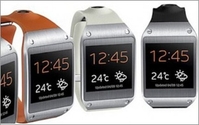What Won't Happen In Mobile This Year
- by Mark Walsh @markfwal, January 13, 2014
 By
now, we’ve seen a slew of predictions of what will happen in mobile media and technology this year. What’s more fun are the things Forrester analysts Julie Ask and Thomas Husson say
won’t happen this year in mobile. The following are some of the anti-predictions for 2014.
By
now, we’ve seen a slew of predictions of what will happen in mobile media and technology this year. What’s more fun are the things Forrester analysts Julie Ask and Thomas Husson say
won’t happen this year in mobile. The following are some of the anti-predictions for 2014.The mobile spending gap won’t close: While Forrester expects many companies and retailers to see more than half their traffic coming from mobile, the budget allotted to the category won’t nearly keep up. Almost half of digital professionals surveyed are spending less than $1 million annually -- not enough, according to the research firm, when a transactional app can cost $2 million a year and a marketing app, $500,000.
Companies won’t distinguish between mobile phones and tablets: Despite the diverging use cases for smartphones and tablets, most businesses won’t try to create separate experiences for each. Mobile teams don’t have the bandwidth, budget or expertise to develop different strategies for each platform. More than four in five (82%) of executives consider tablets to be an extension of their mobile phone efforts.
Wearables won’t be more than a niche market: CES was filled with all sorts of wearable tech, from a new generation of smartwatches to a solar-charging handbag to a “brain sensing headband.” But many will have only a limited audience. “Too few consumers will have the motivation to change and buy these devices en masse. Google Glass will remain one of the few devices that serve as a true platform for third-party apps.” And how many people have you seen on the street wearing Google’s eyewear?
Businesses will fail to leverage the merger of social and mobile: The explosion in popularity of messaging apps like WeChat, Snapchat and KaKao globally underscore the growing fusion of social media and mobile devices. But Forrester points out that most social players outside of Facebook are still developing marketing options for advertisers.
That means companies should focus on providing relevant and entertaining content rather than paid media. “You can learn from early experimenters like Taco Bell, which used Snapchat to engage with a younger audience by offering a more genuine, unfiltered exchange,” according to the Forrester report “Predictions 2014: Mobile Trends for Marketers.” That’s keeping in mind that most posts on Snapchat disappear after 10 seconds.


